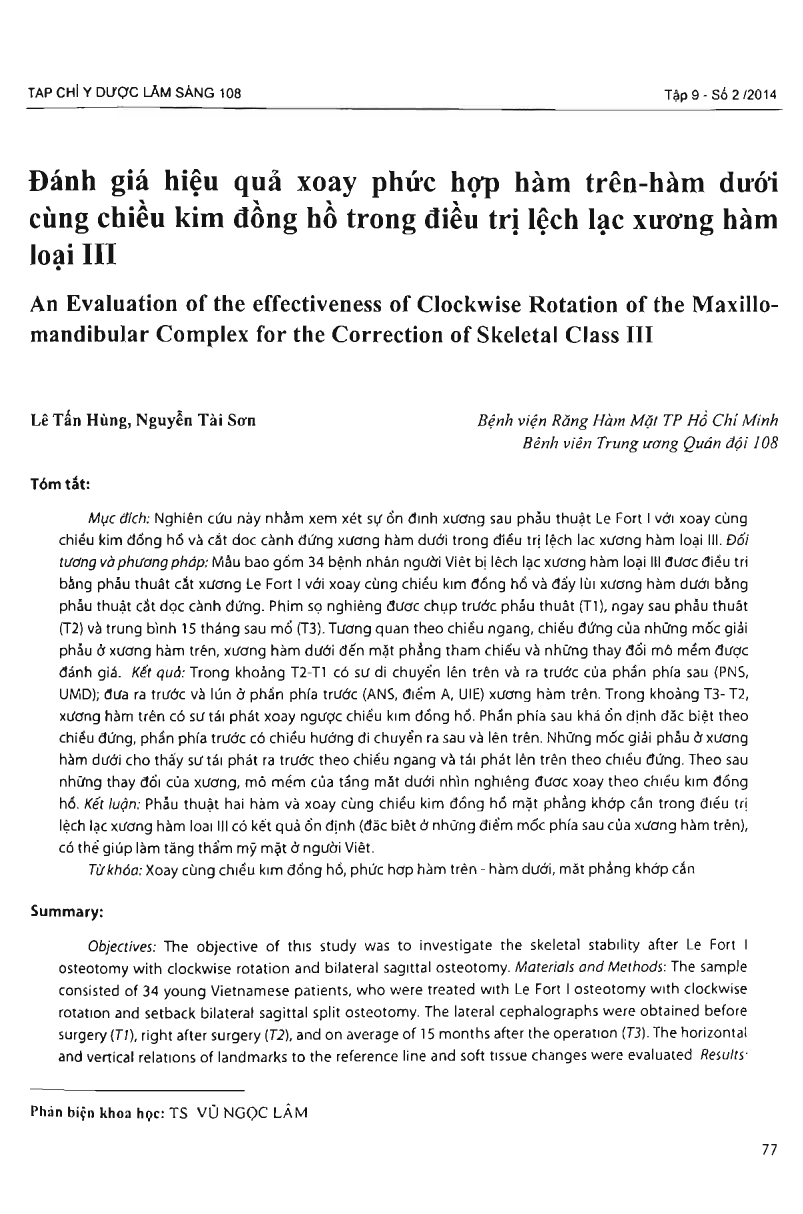
Objectives: The objective of this study was to investigate the skeletal stability after Le Fort I osteotomy with clockwise rotation and' bilateral sagittal osteotomy. Materials and.Methods: The sample consisted of 34 young Vietnamese patients, who were treated with Le Fort I osteotomy with clockwise rotation and setback bilateral sagittal split osteotomy. The lateral cephalographs were obtained before surgery (T1), right after surgery (T2), and on average of 15 months after the operation (T3). The horizontal and vertical relations of landmarks to the reference line and soft tissue changes were evaluated. Results: During the T2 - T1 period, there was upward and forward movement of the posterior part (PNS, UMD) and advancement and impaction of the anterior part (ANS, A point, UIE) of the maxilla. The mandible was moved superiorly and posteriorly. During the T3 - T2 period, maxillary segment showed counterclockwise rotation relapse. The posterior part was relatively stable, especially in the vertical position and the anterior part moved in the posterior and superior directions. Mandibular landmarks showed forward relapses in the horizontal aspect and upward relapses in the vertical aspect. According to the skeletal changes, the soft tissue of the lower facial profile is rotated clockwise. Conclusions: Twojaw surgeries involving clockwise rotation of the occlusal plane showed stable results, especially in the maxillary posterior landmarks. The clockwise rotational movement can be beneficial to increase the skeletal stability and facial aesthetics in Vietnamese.
- Đăng nhập để gửi ý kiến
